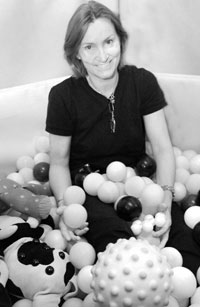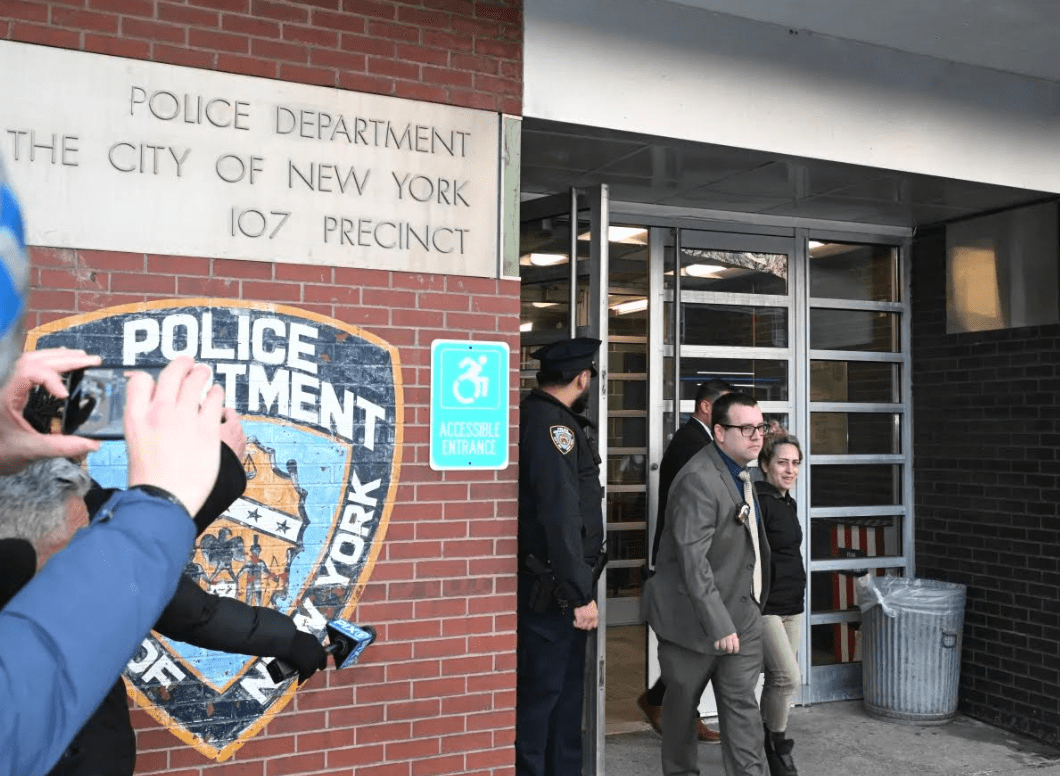By Abby Latour
These methods are proving to be effective treatments of childhood behavioral and learning disorders like autism and attention deficit hyperactivity disorder or A.D.H.D. Rowe has recently expanded her Lower Manhattan practice with the opening of a third Downtown location in April. The expansion is due to increasing diagnoses of these illnesses in children, as well as growing interest in alternative treatments to drug therapy. She and her staff of 24 therapists are treating some 200 children at clinics at 143 Reade St., 69 Murray St. and 60 Thomas St.
The practice, called Support by Design, is better equipped than the best gym or indoor play area for children. Covering the walls are various hanging bars and other pieces of apparatus that can be hung from the ceiling. The largest clinic, on Murray St., has a floor to ceiling spiral slide and a rock-climbing wall. Among the equipment and objects along the floor are a bin full of leather pouches of different weights, balls of different sizes, an inflated pillow about four feet high, and a hand pump for water. Yoga is offered at her Thomas St. center.
“It looks like play, and hopefully it is play,” says Rowe. “But you are constantly upping the ante on what the child can do. These kids could go to the park but may not know how to play there and may just run around screaming. The role of the therapist is to constantly facilitate the next appropriate response so they discover people, creativity and movement are fun and good.”
Children who suffer from A.D.H.D. can show a variety of symptoms – from being disorganized to acting spontaneous or withdrawn. They display symptoms such as running around a room oblivious to other people or screaming. They may hate to be touched, be bothered by sound, have difficulty dressing, be clumsy or avoid eye contact. In general, these children will tend to miss major development milestones.
An ordinary activity, such as eating a meal or standing in line, becomes impossible.
“Most of these kids tend to be in a high state of arousal every day,” Rowe says. “One person described it as having a 9/11 every day of their lives. Others are on the other end of the continuum. We try to assess where these kids are functioning and get them to the zone where they can function.”
A great deal of the treatment consists of educating the parents, some of whom may have tried drug therapy with little or no success. Parents receive a “sensory diet” with suggestions about how to encourage a child’s system to self-regulate better. For example, some children are calmed by a deep tissue massage. A parent with this type of child may be encouraged to massage him shortly before dinner, allowing him to sit through a meal.
“It might mean taking children to a playground at a certain time knowing that homework will go better afterwards. You want to show parents what a child can and can’t do. If you understand the child’s needs you can enjoy the child instead of constantly disciplining him or her,” said Rowe.
Part of the reason for the expansion of her practice is an open door policy. Support by Design accepts private payment as well as recommendations from the Board of Education and the state-funded Early Intervention Program, which sometimes pay for children to receive this therapy. Some insurance policies also cover this type of treatment.
About half of Rowe’s patients are around four years old, although babies as young as two months can be identified as having developmental delays that may be treatable with therapy. Three-quarters of Rowe’s patients are boys, although this may be partly because girls are less likely to display the obvious outward signs of the behavior, such as screaming, she says.
Depending on their diagnosis and need, children receive sessions of 30 to 60 minutes for a course of weeks or months.
Children can show remarkable progress during this time.
“We never say cured. You want to maximize a child’s potential. You may know a child is smart but they’re not working at that potential. You want to help them reach that. You want to celebrate the good and eliminate the panic surrounding a child. It’s often a situation where light comes out of darkness,” says Rowe.
Reader Services




























